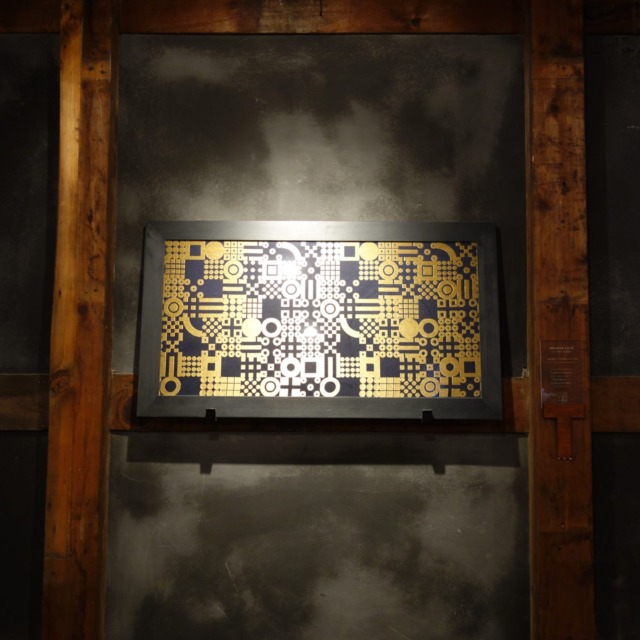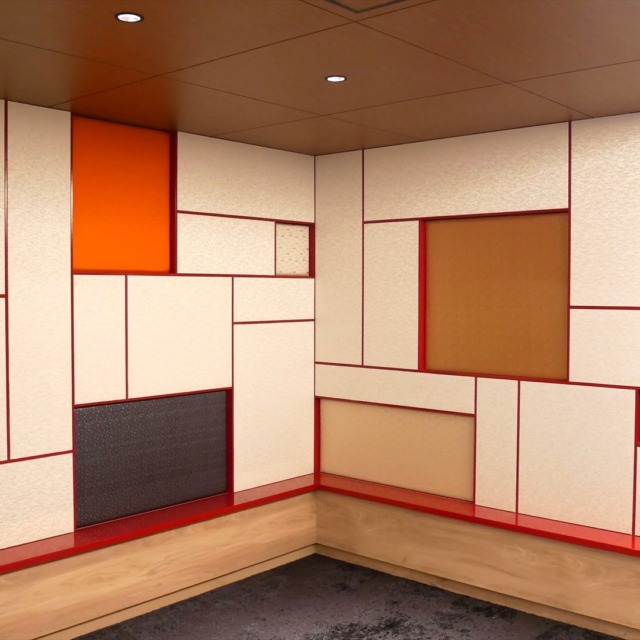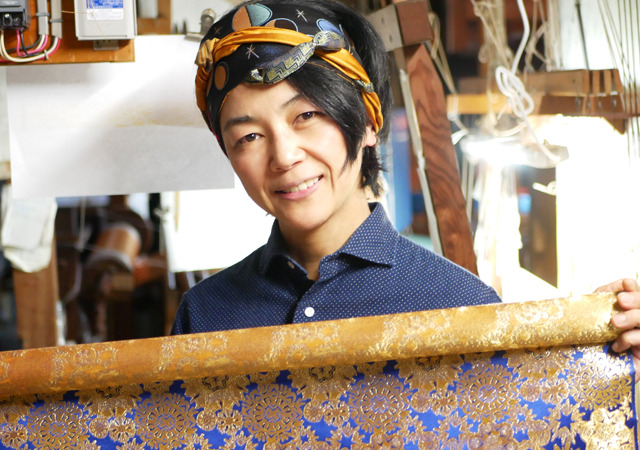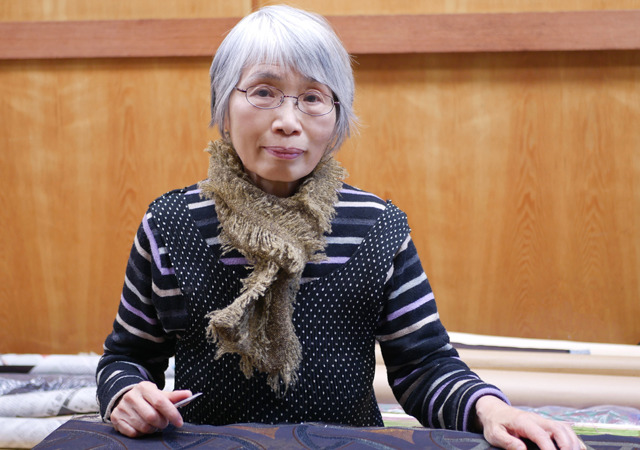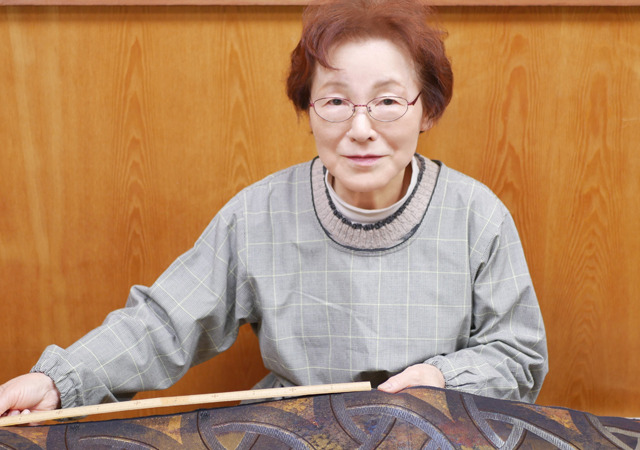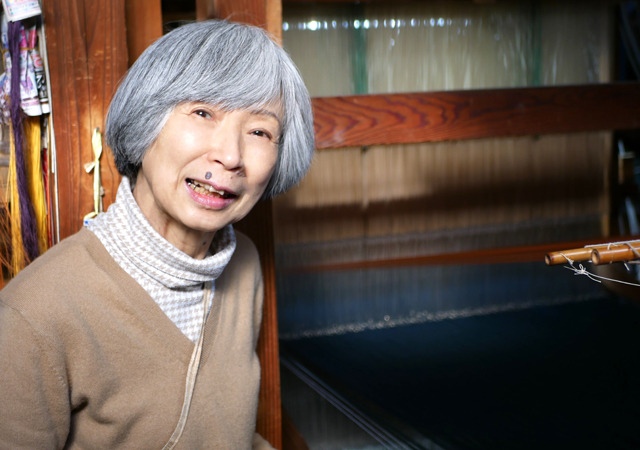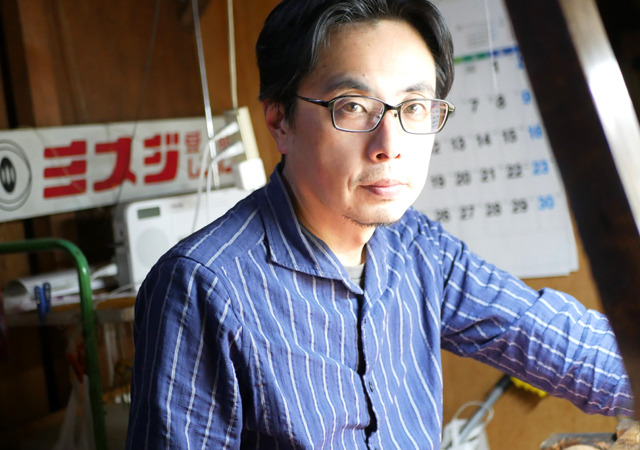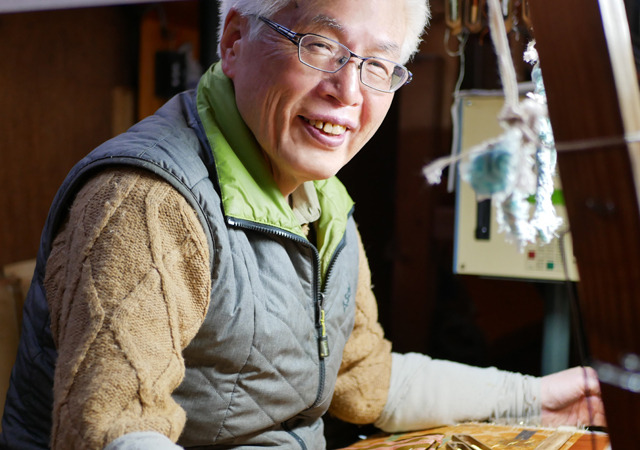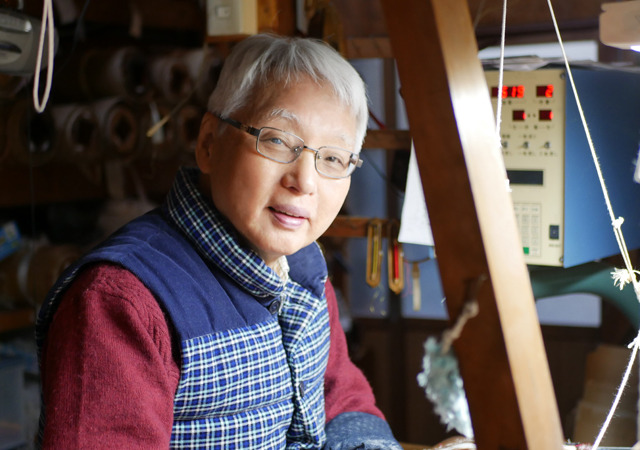Keita Okamoto (Executive Vice President) Craftsman
Born in 1976 as the eldest son of Mitsuo. Although he is the youngest of the Nishijin Okamoto weavers, he has over 18 years of experience. He also manages the progress of the Tango factory.
I took my first steps as a craftsman at the age of 28. The first issue was getting used to silk thread. In order to handle the thread, I had to learn not to let it defeat me.
The first thing I made was terrible. I can only see the back while I’m working on a piece. Even looking at the front in a mirror while weaving does not fully prevent errors, and when I finish weaving, I’m anxious when I take the piece off the loom and turn it over. Even now, I’m nervous while I’m weaving. The more experienced craftsmen keep to a rhythm when they weave. I think that rhythm is something your body learns, so I’d say there’s nothing for it but to keep weaving each day.
I had worked for another company before joining the family business, and the thing that surprised me the most was how serious everyone is about the work, from the weavers themselves to the support staff. Even on holidays, everyone comes to work as normal and just quietly gets on with it, without complaining. When I saw the love and sense of responsibility they feel for their work, and how natural it is for them, it motivated me. My values changed. I’m now in my 18th year as a craftsman myself, and while I’m now used to it, there’s so much more depth that I have yet to plumb. Since Nishijin comprises various processes, I can’t hold everyone else up for individual reasons. To be a craftsman, obviously you need weaving skills, but you also need to be able to handle issues calmly when they happen. I try to set a schedule with plenty of extra time in the first place. I’m also in charge of preparing the looms and giving instructions on top of my hand-weaving work. Like elsewhere, our craftspeople are aging, so we allow 3-4 months so that we can all meet the deadline without overdoing it.
We tend to be focused on getting the day’s work done, but we need to think about future generations. Even in the days since I started here, our craftsmen have aged and there’s been a rapid decrease in people involved in Nishijin brocade. Things like this are serious changes. But there have been good changes too—for example, we are now making products for purposes and fields that we didn’t before. Our CEO and executive officer studied fine arts at university, and are excellent at coming up with ideas for new craftsmanship that Nishijin has not done before. Our use of traditional techniques and materials that we have amassed is a unique strength of ours, and I’m sure it will be the key to our success in future. Building that future together is one more reason why I am working to develop my skills even further.
(Interviewed on November 13, 2023 / Text by Sakiyo Morimoto)

